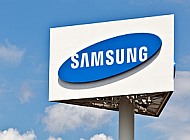In the six years since it first appeared on a commercial device, Android has come a long way, from being (possibly) the most unoptimized of any mobile operating system in history to one that no longer lags at every chance it gets. Google has optimized its performance and made it less demanding on resources with almost every alternate update, and the advancements in mobile processors has also lent a hand in making sure Android offers a much better experience than it could have done even two years ago.
However, with almost every performance-enhancing update to Android, we have seen Samsung (and other manufacturers) impede on the improvements by bloating the OS to extreme proportions. Unless you buy a high-end Samsung smartphone or tablet, the software on the company's devices has continued to be considerably less optimized than stock Android. Even on a high-end device, turn on the camera, gallery or phone app, and you will be met with long loading times and irritating stutters that make one wonder how the world's largest mobile manufacturer with so many resources manages to slow down an OS that is otherwise smooth and fast on humble hardware that costs a fraction of Samsung's flagship phones.
With the Moto G, Motorola proved that a budget Android device doesn't have to offer a poor experience that see people waiting for things to happen every time they press something on the screen. What drove Motorola to aim for a low price while offering a good experience previously unheard of on low-end devices (well, except on the Lumia 520, though we won't be talking of that since it runs Windows Phone)? It's simple – the market is moving away from the glitz of high-end devices with flashy specs and focusing on budget devices, as smartphone growth is set to boom in developing markets like India and Brazil, where a huge number of consumers will be moving on from feature phones and adopting low-cost devices as their first smartphone.
Samsung doesn't currently acknowledge it, but it will soon have to focus on the same market if it wishes to stay in the game. However, with the software it currently offers on its devices, it's going to have a tough time giving an experience that the competition (like Motorola, and countless Chinese manufacturers) will provide. Even on the Galaxy S5, while new features might have been few, Samsung did almost nothing to optimize its software, with things like the gallery and camera apps still considerably laggy (compare this to devices like the HTC One M8, where even 5000 photos can't slow down the gallery app, or Sony's Xperia Z1, which features less powerful hardware yet has a camera app that is the fastest in all of the Android ecosystem.)
For now, Samsung's huge marketing machine and brand power will drive millions to buy its devices at all price points, but sooner or later, the company is going to have to do something about the software experience. All its new Exynos processors or software features cannot do a thing if actually using the device isn't a fluid experience like it is on devices running stock Android (or even devices running custom Android skins like Sony's).
Admittedly, with so many add-on features, it's perhaps not possible to bring Samsung's software as close to the performance of unadulterated Android, but when you see a flagship device like the Galaxy Note 3 lagging when you're doing as something as simple as changing the shooting mode in the camera app, it's simply a case of a company ignoring a huge underlying problem.
We all know how it turned out for Nokia once it started ignoring the market trends, and while Samsung has showed more competence in reading market trends, it could soon be looking on from the sidelines if it doesn't manage to fix the glaring issues on its software, software that is currently running on more than a hundred million devices.

